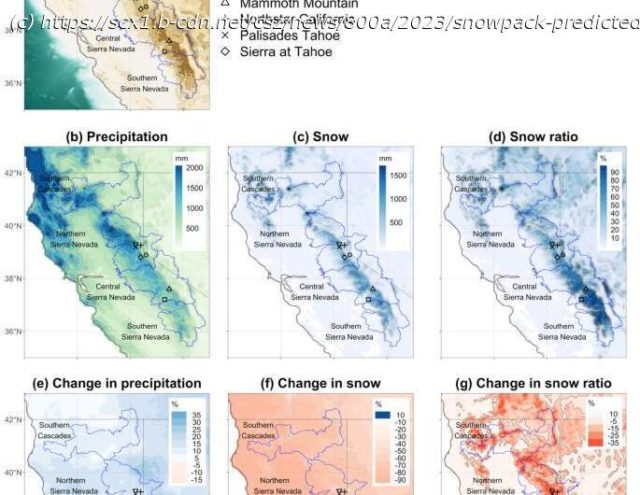This winter’s major storms laid down one of the largest snowpacks recorded in California’s Sierra Nevada, along with an unusual amount of snow at low mountain elevations.
This winter’s major storms laid down one of the largest snowpacks recorded in California’s Sierra Nevada, along with an unusual amount of snow at low mountain elevations.
But such prolific snowfall at lower elevations is set to become increasingly rare in coming years as climate change drives temperatures higher, according to new research.
In a study published this week, scientists found that mountain snowlines in California have already crept higher, and could rise significantly more if nothing is done to slow the pace of global warming. Researchers projected that from the 2050s to 2100, rising temperatures could push average snowlines 1,300 feet to 1,600 feet higher across the Sierra Nevada and the southern Cascades mountain ranges compared to a century earlier.
The research is published in the journal Climate Dynamics.
As more precipitation falls as rain instead of snow at lower elevations, the shifting patterns of runoff will pose substantial challenges for water management in California, and for the operation of dams that were designed to capture and store snowmelt.
« Snowlines are rising, » said Alexander Gershunov, a research meteorologist who co-authored the study with other scientists at UC San Diego’s Scripps Institution of Oceanography.
« If we look towards the end of the century, the snow will be confined to much higher elevations in most years, » Gershunov said. « Low-elevation mountains will be more and more likely to be snow-free. »
After examining more than 70 years of snow data, researchers concluded that with unmitigated global warming, California’s mountains could lose more than half of their seasonal snow cover.
They said the average amount of snow from November through March in the northern Sierra could decrease by more than 70% by the second half of the century, while decreases of about 40% are likely in the higher mountains of the central Sierra and southern Sierra.






